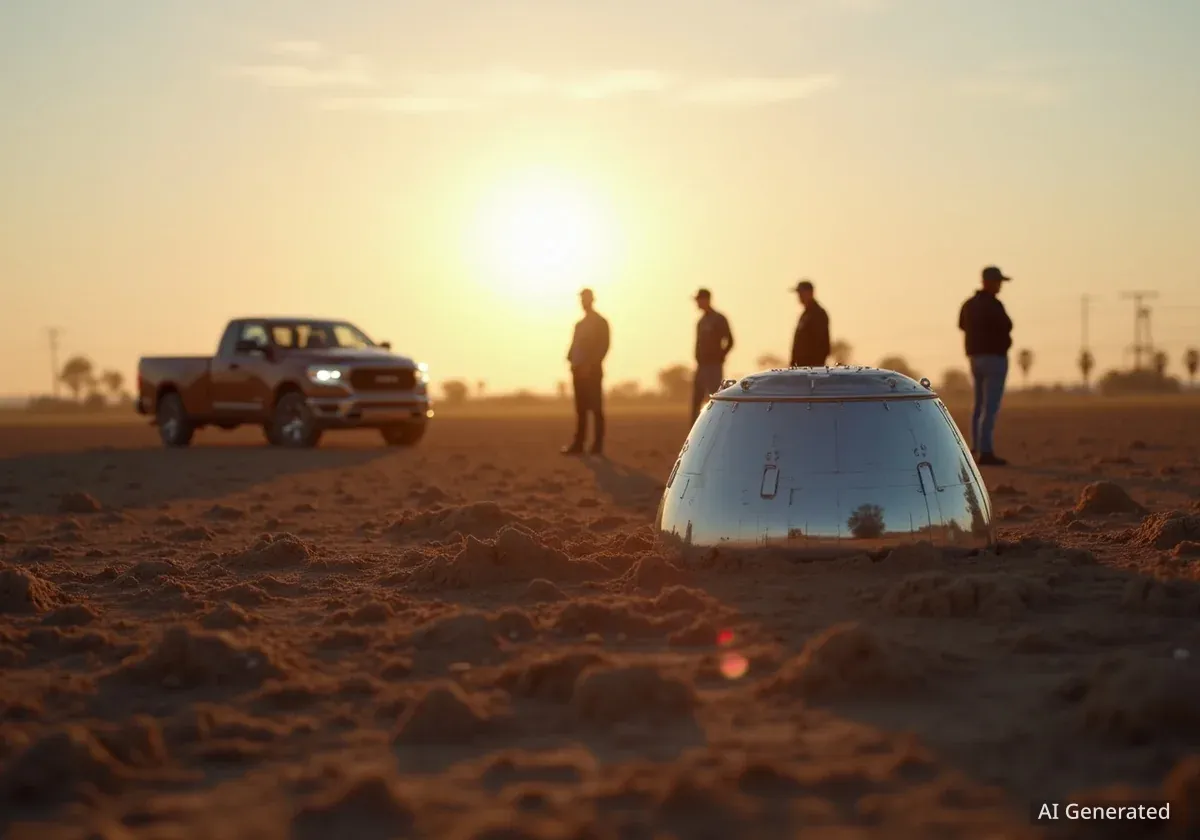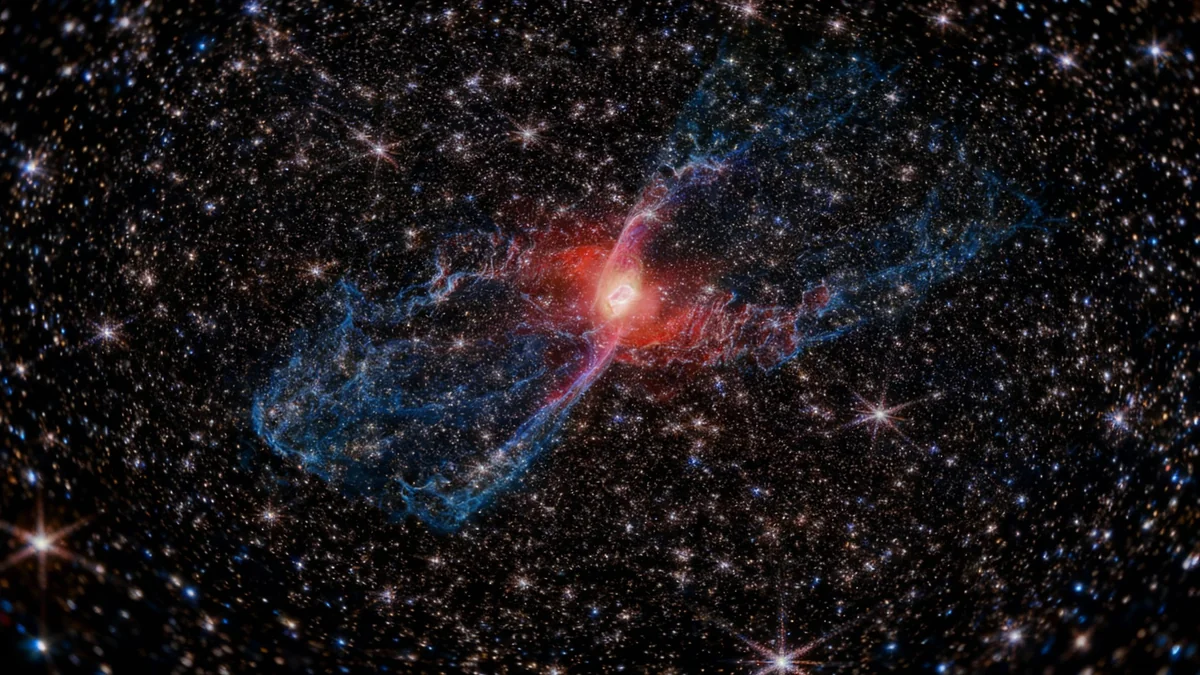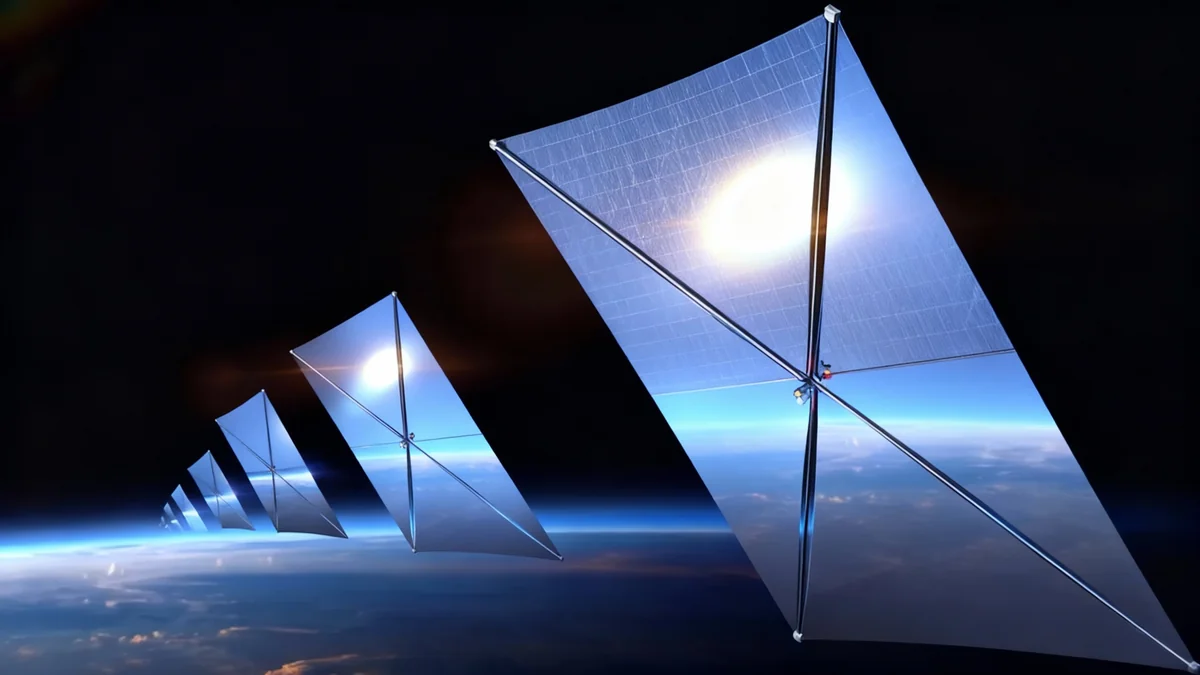A large piece of scientific equipment belonging to NASA made an unexpected landing in a rural West Texas field on Thursday, October 2, 2025, surprising local residents. The payload, approximately the size of an SUV, was part of a high-altitude balloon mission launched from New Mexico a day earlier.
The object descended under a massive parachute into a wheat field near Edmonson, Texas. Ann Walter, a local resident, witnessed the descent and reported it to authorities, leading to a coordinated recovery by a NASA team.
Key Takeaways
- A NASA scientific payload landed unexpectedly in a field in Edmonson, Texas.
- The equipment was launched from the Columbia Scientific Balloon Facility in Fort Sumner, New Mexico, about 140 miles away.
- The payload is used for high-altitude astronomical research, studying celestial objects like stars and galaxies.
- Local resident Ann Walter documented the landing and contacted the Hale County Sheriff's Office.
- NASA personnel successfully recovered the equipment.
An Unforeseen Event in West Texas
On what began as a normal day in rural West Texas, resident Ann Walter noticed an unusual object slowly descending from the sky. As it drew closer, she realized it was a large, boxy structure attached to an enormous parachute.
The object landed safely in her neighbor’s wheat field. Upon closer inspection, Walter and her husband, Hayden, saw that the equipment was adorned with NASA stickers, confirming its origin. The sheer scale of the apparatus was striking.
"It’s crazy, because when you’re standing on the ground and see something in the air, you don’t realize how big it is," Walter said. "It was probably a 30-foot parachute. It was huge."
Realizing the significance of the find, Walter contacted the Hale County Sheriff's Office to report the landing. Her call confirmed what local authorities had already been told: NASA was searching for its missing equipment.
High-Altitude Science
NASA's scientific balloon program provides a unique and cost-effective platform for conducting research. By carrying instruments to altitudes above 20 miles (over 100,000 feet), these balloons operate above 99% of Earth's atmosphere. This vantage point allows telescopes and other sensors to capture clearer data without the atmospheric distortion that affects ground-based observations.
Tracing the Object's Origin
The equipment was part of a mission from NASA’s Columbia Scientific Balloon Facility, located in Fort Sumner, New Mexico. This facility is a primary site for launching large, unmanned, high-altitude research balloons that carry scientific experiments into the stratosphere.
Hale County Sheriff David Cochran later confirmed that his office had been contacted by NASA officials who were tracking the research payload. According to a launch schedule on the facility's website, several balloon flights were planned from the Fort Sumner location.
The Mission's Purpose
After being connected with personnel from the balloon facility, Walter learned more about the payload's function. A representative explained that the equipment contained telescopes designed to gather information on distant celestial bodies, including stars, galaxies, and black holes.
These missions are critical for astrophysics and cosmology, providing valuable data that helps scientists understand the universe. The balloons typically fly for several hours or days before the payload is released to return to Earth via parachute for recovery and data analysis.
Mission by the Numbers
- Altitude: Over 20 miles (approx. 32 kilometers)
- Travel Distance: 140 miles (approx. 225 kilometers) from launch site
- Payload Size: Compared to a sport-utility vehicle (SUV)
- Parachute Diameter: Estimated at 30 feet (approx. 9 meters)
A Successful Recovery Operation
Following the calls, a specialized team from the NASA facility was dispatched to the landing site in Edmonson. According to Walter, the researchers arrived with a truck and trailer specifically equipped for such retrieval operations.
The team worked to safely secure and remove the large scientific instrument from the wheat field. The process was handled efficiently, ensuring the valuable research equipment was recovered intact. The ongoing government shutdown reportedly impacted NASA's ability to provide an immediate official comment on the event.
Before the recovery team arrived, Walter and her family had the unique opportunity to take photos and videos of the landed NASA equipment, documenting the unusual visitor to their community.
A 'Surreal' Experience for the Community
For Ann Walter and her family, the event was more than just a momentary curiosity. It was a direct connection to the country's space and science efforts, happening right in their own backyard.
The incident provided a rare and memorable experience, turning an ordinary day into something extraordinary. Reflecting on the event, Walter shared her sense of wonder and excitement.
"It’s kind of surreal that it happened to us and that I was part of it," she stated. "It was a very cool experience."
The safe landing and successful recovery ensured that the scientific mission could be completed, with researchers able to retrieve the valuable data collected during its flight high above the Earth.





